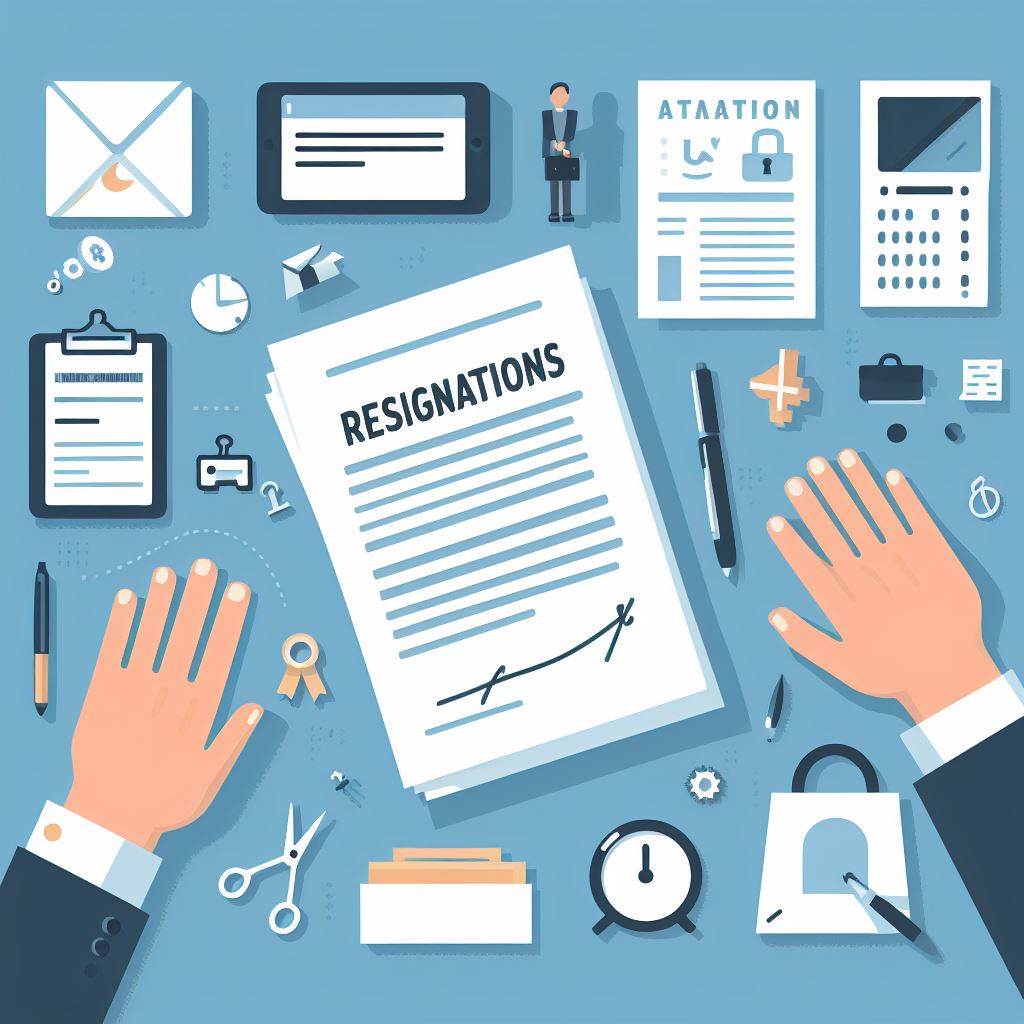Resignation Letter: How to Write a Professional Resignation Letter
Your Guide to Crafting a Thoughtful and Gracious Farewell
Writing a resignation letter is a crucial step in leaving a job with professionalism and courtesy. Whether you’re moving on to a new opportunity or making a career shift, follow these step-by-step guidelines to create a resignation letter that reflects gratitude, professionalism, and a smooth transition.

1. Start with a Polite Salutation: Setting a Respectful Tone in Resignation Letter
Begin your letter with a polite salutation. Address your immediate supervisor or the appropriate person in a respectful manner, using a greeting like “Dear [Supervisor’s Name].” Maintain a positive and professional tone from the beginning.
2. Clearly State Your Intention: Direct and Concise Communication
In the opening paragraph, clearly state that you are resigning from your position. Be direct and concise in expressing your intention to leave. Include the date of your last working day to provide clarity on your departure timeline.
3. Express Gratitude: Acknowledging the Experience
In the body of the letter, express gratitude for the opportunities and experiences you’ve gained during your time with the company. Highlight specific aspects of the job, colleagues, or company culture that you appreciate. This sets a positive tone for the rest of the letter.
4. Provide a Reason (Optional): Be Diplomatic and Tactful
If you feel comfortable, provide a brief and diplomatic reason for your resignation. You can mention personal reasons, career growth, or a new opportunity. However, it’s not mandatory to include this information, and you can choose to keep it private.
5. Offer Assistance in Transition: Facilitating a Smooth Handover
Assure your employer that you are committed to ensuring a smooth transition. Offer assistance in training a replacement, documenting processes, or any other tasks that can facilitate a seamless handover. This demonstrates professionalism and consideration for your colleagues.
6. Express Willingness to Train: Enhancing the Transition Process in Resignation Letter
If applicable, express your willingness to train your replacement or provide guidance during the transition period. This gesture shows your commitment to the team’s success even after your departure and fosters a positive legacy.
7. Close on a Positive Note: Expressing Well Wishes in Resignation Letter
In the closing paragraph, express your well wishes for the company’s continued success. Reiterate your gratitude and state that you’ve enjoyed working with the team. Close on a positive note to leave a lasting impression of professionalism.
8. Use a Professional Sign-Off: Closing with Respect
Choose a professional sign-off that aligns with the tone of your letter. Common closings include “Sincerely,” “Best Regards,” or “Yours Truly.” Sign your letter by hand if sending a hard copy, or use a digital signature for electronic submissions.
9. Format and Proofread: Ensuring Clarity and Precision
Ensure that your resignation letter is well-formatted and free of errors. Use a clean and professional font, maintain consistent spacing, and organize your content logically. Proofread your letter thoroughly to catch any grammatical or typographical mistakes.
10. Deliver the Letter Personally: Respectful Communication in Resignation Letter
Whenever possible, deliver the resignation letter personally to your supervisor. If that’s not feasible, send it via email or mail. Ensure that your supervisor receives the letter before any public announcement to maintain transparency.
Conclusion: Departing with Professionalism
In conclusion, writing a resignation letter is a professional and courteous way to communicate your decision to leave a job. By following these step-by-step guidelines, you can navigate this process with thoughtfulness and ensure a positive and respectful departure.


